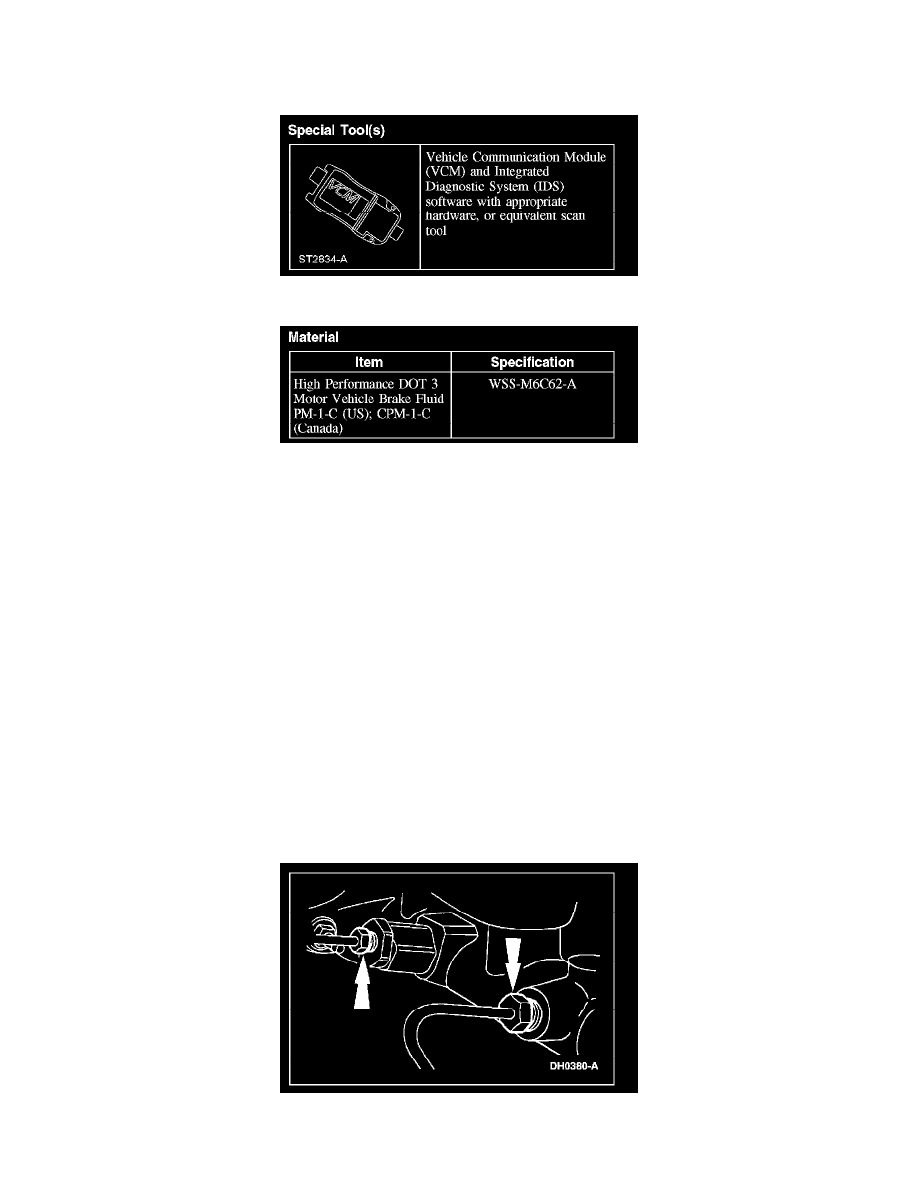F 350 4WD Super Duty V8-6.4L DSL Turbo (2008)

Brake Bleeding: Service and Repair
Component Bleeding
Component Bleeding
Special Tool(s)
Material
Master Cylinder Priming
WARNING: Do not use any fluid other than clean brake fluid meeting manufacturer's specification. Additionally, do not use brake fluid that
has been previously drained. Following these instructions will help prevent system contamination, brake component damage and the risk of
serious personal injury.
WARNING: Carefully read cautionary information on product label. For EMERGENCY MEDICAL INFORMATION seek medical advice.
In the USA or Canada on Ford/Motorcraft products call: 1-800-959-3673. For additional information, consult the product Material Safety
Data Sheet (MSDS) if available. Failure to follow these instructions may result in serious personal injury.
CAUTION: Do not allow the brake master cylinder reservoir to run dry during the bleeding operation. Keep the brake master cylinder
reservoir filled with clean, specified brake fluid. Never reuse the brake fluid that has been drained from the hydraulic system or damage to
the brake system components may occur.
CAUTION: Brake fluid is harmful to painted and plastic surfaces. If brake fluid is spilled onto a painted or plastic surface, immediately wash
it with water.
NOTE: When the brake master cylinder has been replaced or the system has been emptied, or partially emptied, it should be primed to prevent air
from entering the system.
1. Disconnect the brake tubes from the master cylinder.
2. Install short brake tubes with the ends submerged in the brake master cylinder reservoir and fill the brake master cylinder reservoir with clean,
specified brake fluid.
